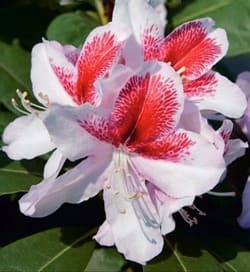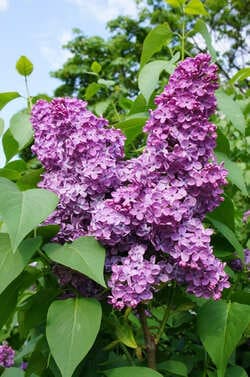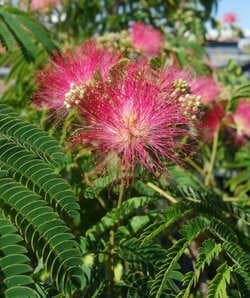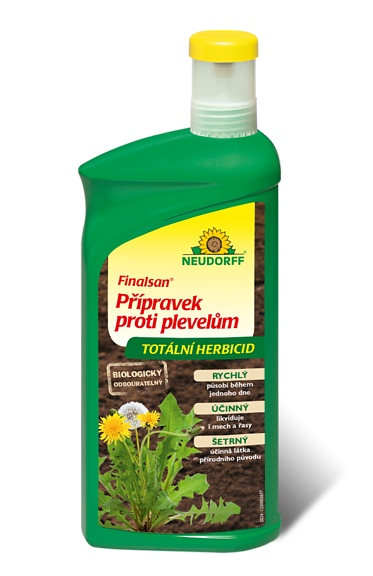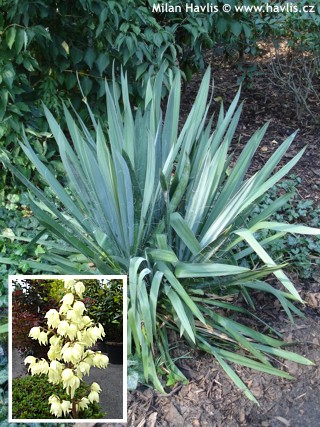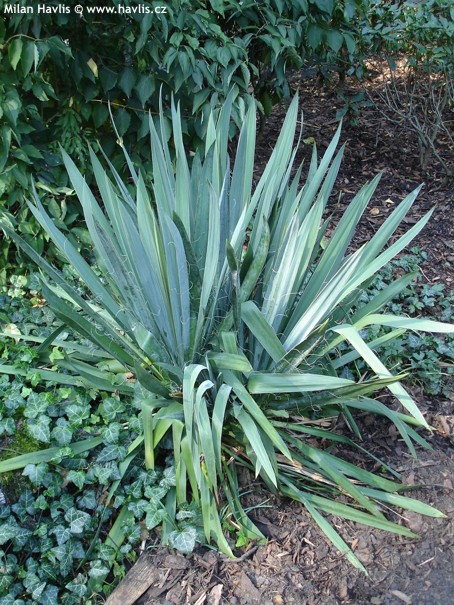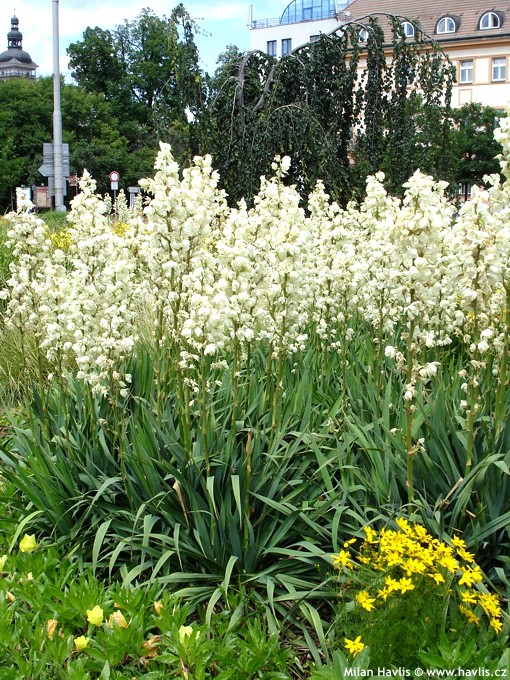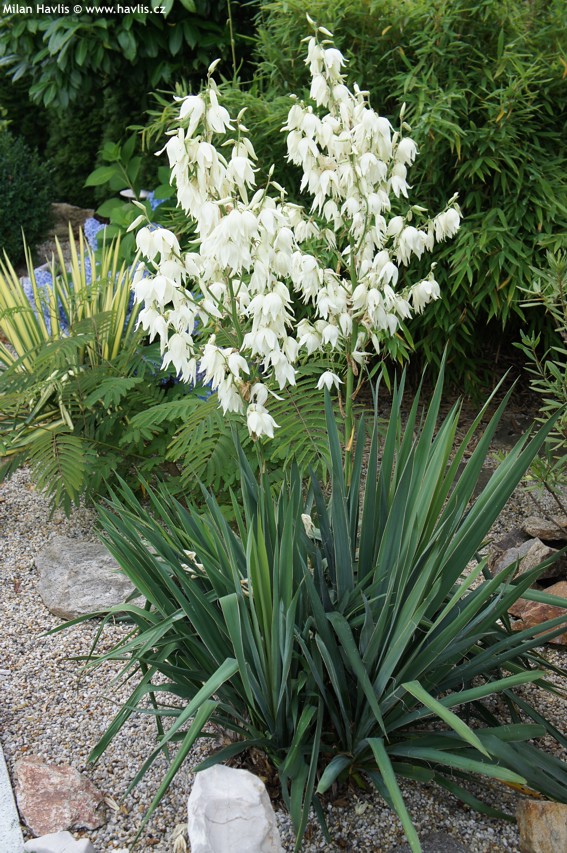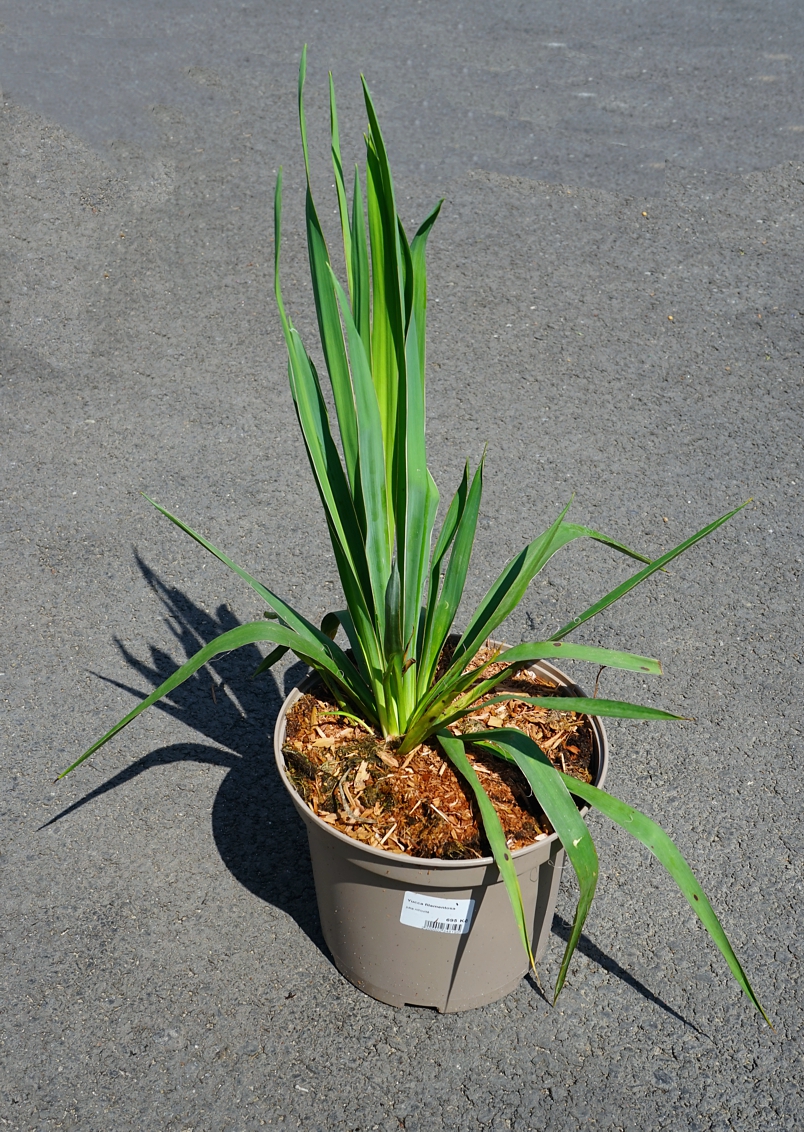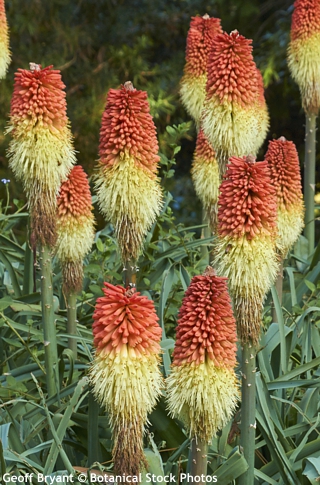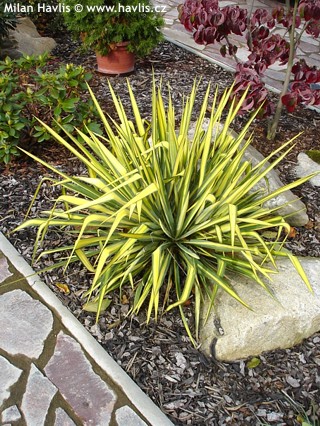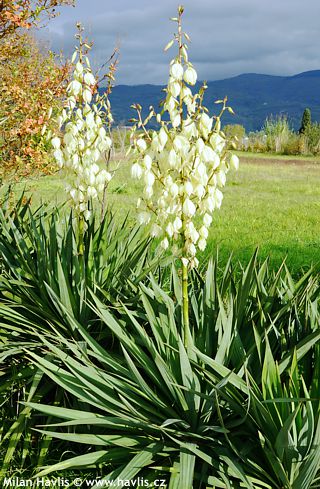Yucca filamentosa Adam's needle


Yucca
Adam’s needle is a great plant which looks as if stolen from sandy deserts in Mexico. Truth is that this plant is native to southern parts of the USA, not necessarily the driest. In both Czech and Slovak republic this plant has been slightly overused over the past few decades in either neglected gardens or in gardens with no style. It seems that everyone who had a cottage needed to have one Adam’s needle without thinking too much of how it will look there. This might be a reason why some young gardeners do not think that yucca is worth growing. I believe they are wrong.
Yucca is a fantastic plant which does resemble exotic parts of the world but is extremely hardy. It is an evergreen shrub with basal rosettes of erect, inversely lance-shaped, pale green leaves which are rigid but not sharp when touched. In second half of June it produces numerous creamy-white, bell-shaped flowers on sturdy stems, up to 180 cm tall. When in full bloom it looks like a giant lily-of-the-valley. Cut off the stem right at the base after flowering.
Yucca looks great if we let it show its architectural character. Thanks to its grass-like appearance it will combine easily with compact conifers and other evergreen shrubs with leathery leaves of various shapes and sizes. Its tropical feeling will be of use in exotic-styled landscapes and can be enhanced by mulching with white or light grey stones around.
Adam’s needle is not fussy about soil type provided it is well-drained. We also grew it in partly wet site where it does surprisingly well but does not flower. Grow it in full sun and expect it to expand by making young plants near mother plant. Unwanted plants can be easily removed and transplanted in spring or autumn. Fully hardy to -30°C (USDA zone 5), perhaps a little bit more.
Last update 28-11-2009
TIPS for luxurious care:
Remove spent flowers as soon as possible. They may deface the plant, especially in rainy weather when they tend to rot soon. Remove any old, ill-looking leaves after winter leaving only stiff, healthy leaves for a great looking plant. If you feel that the mother plant is going down after flowering cut it off right at the roots leaving its young nursling around that will quicker become strong adults capable of flowering.
Goods are shipped all over Europe. For Russia and U.K. and for further details please read about SHIPPING OPTIONS HERE.
Are you interested in a serious discount for orders NOV-FEB? Check your options here.
THE PRICES INCLUDE VAT of 15%. For quick conversion you can use 1 CZK = approx. 0.04 EUR
- STANDARD QUALITY - Plants of this group are 1st class quality with number of branches and overall density adequate to their size and age, considering they were container grown.
- DE LUXE QUALITY - This label guarantees a luxurious quality of manually selected plants that, compared to their height and age, are exceptionally dense and beautiful.
- EXTRA - These plants are usually mature and bigger specimens with exceptional overall appearance.
- STANDARD (as described in the plant form) means a tree with a trunk of 190-210 cm and a crown at the top, unless specified differently. The commercial size for trees is their girth measured in the height of 1m from ground.
- HOBBY - These plants are of the same quality as our standard-quality plants but younger and therefore cheaper.
- SHRUB - a woody plant with branches growing bushy from the ground level.
- HALF-STANDARD or MINI-STANDARD - a small tree with shorter trunk, its size is usually specified.
- FEATHERED - These are trees with branches growing already from the base of the trunk and up along the stem.
- GRASSES and PERENNIALS - Sizes given usually read the diameter of the pot or the clump, as specified.












